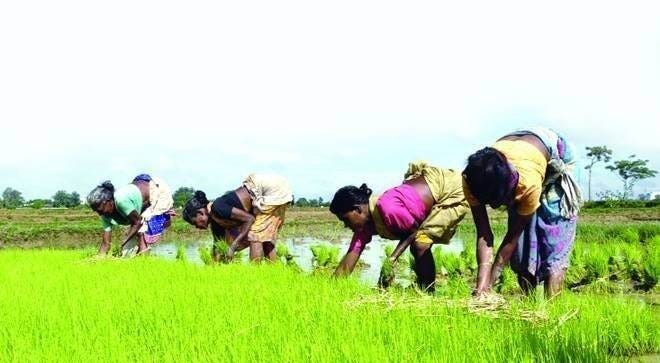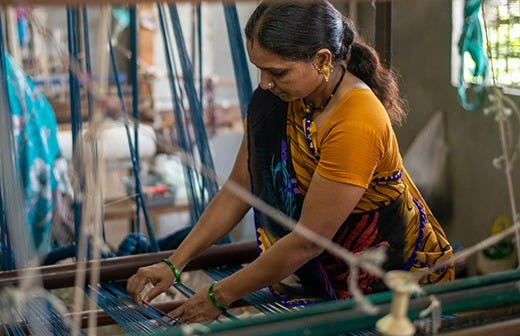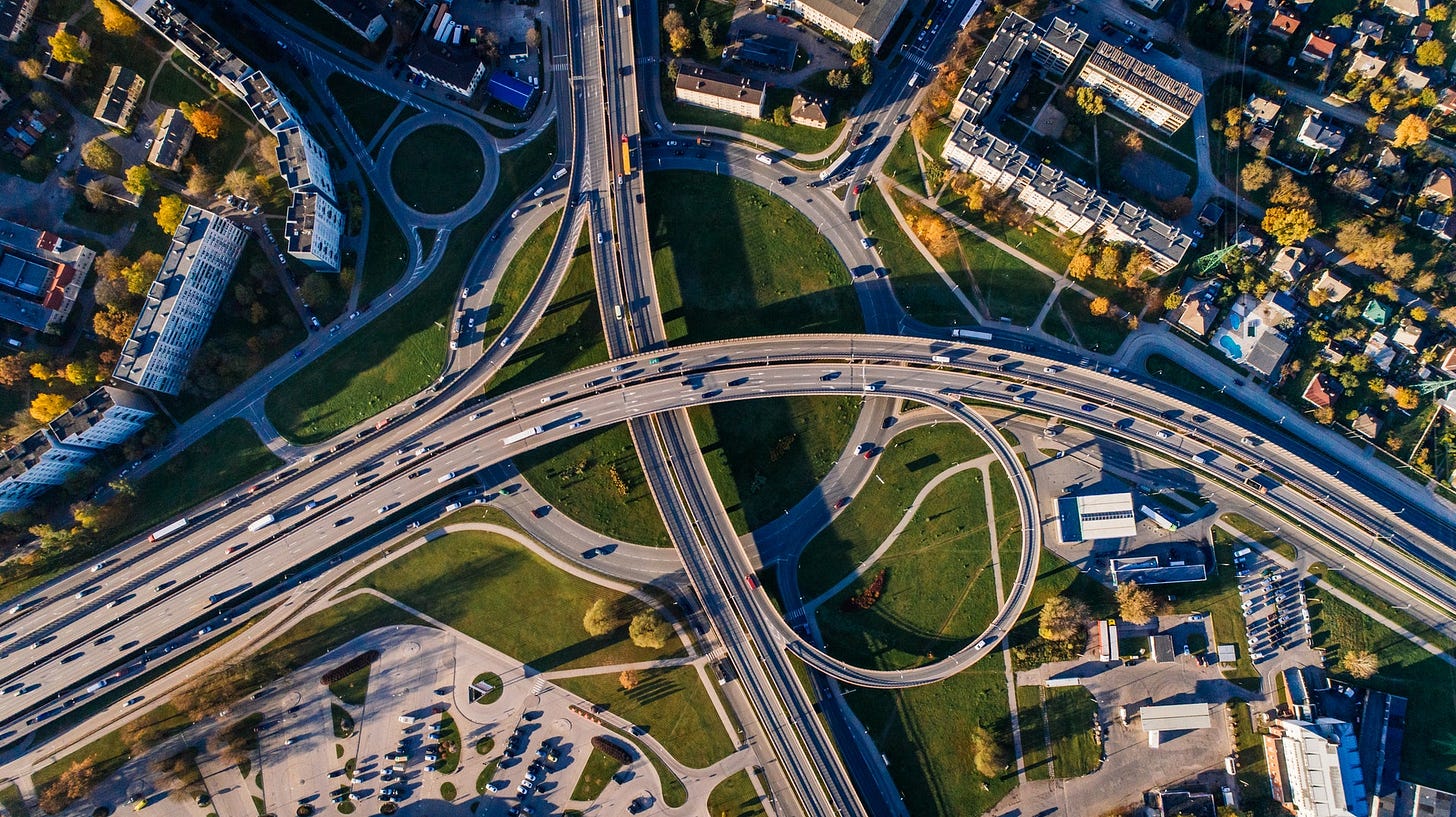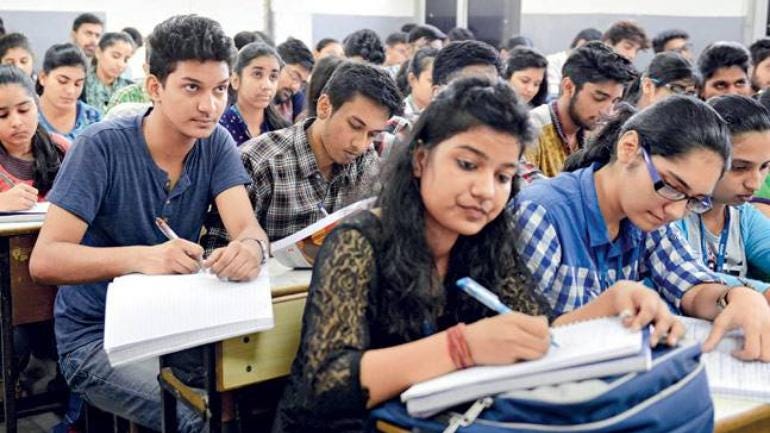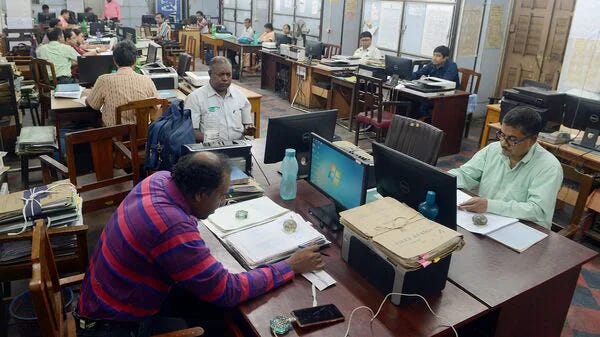On Mondays, we usually post an Industry Report but this time we wanted to give you all a briefing on something really important and did not want to wait for it to become “Baasi Khabar”.
Go through it all….Do Not Skip. This time we have got some interesting stuff to cover!
Union Budget FY26: Balancing Growth with Fiscal Prudence
India’s FY26 Union Budget comes at a time of slowing domestic consumption and external uncertainties. A major highlight of this year’s budget is the big taxation relief for the middle class—under the new tax regime, individuals earning up to ₹12 Lakh annually will pay no income tax.
While this move will result in a ₹1 trillion revenue loss for the government, it is expected to provide a significant boost to middle-class spending, fueling consumption demand across sectors.
On the infrastructure front, after witnessing an impressive 30% CAGR in capital expenditure between FY20-24, there was a slowdown in FY25, with Real Expenditure (RE) falling 8% short of the budgeted estimate (BE).
However, the government remains committed to infrastructure-led growth, increasing the FY26 capex estimate by 10% over FY25RE to ₹11.21 trillion—a level comparable to the FY25BE of ₹11.11 trillion.
At the same time, fiscal prudence remains a key focus. The fiscal deficit is projected at 4.4% of GDP for FY26, improving from 4.8% in FY25RE. This disciplined approach signals the government’s intent to manage finances efficiently while ensuring continued growth momentum.
With an emphasis on tax relief, infrastructure investment, and fiscal consolidation, the Union Budget FY26 aims to strike a balance between short-term consumption revival and long-term economic stability.
Key Highlights of Budget:
Fiscal Performance:
On the fiscal deficit front, the Government exhibited a disciplined path with a deficit target revised down for FY25RE at 4.8% versus an earlier estimate of 4.9% and to 4.4% for FY26BE, as against market expectation of ~4.5%.
While the fiscal deficit in absolute terms in FY26BE remains at a similar level of FY25RE at ₹15.7 lakh crore, gross market borrowing has been increased to ₹14.8 lakh crore versus ₹14.0 lakh crore in FY25RE.
Focus on Subsidiaries:
The subsidy allocation has remained unchanged for broader heads. The government has kept a strict vigil on its subsidy allocation which for FY26E is estimated at ₹ 3.8 lakh crore, flat on a YoY basis, however down as a % of GDP basis to 1.1% of GDP in FY26E vs. 1.2% in FY25E.
The government has also broadly maintained allocation towards its flagship DBT schemes namely Mahatma Gandhi National Rural Employment Guarantee Program (MGNREGA) and Pradhan Mantri Kisan Samman Nidhi (PM-Kisan)
Income Tax Relief:
The major focus of the budget has been to revv up consumption via income tax reliefs: Exemption on personal income tax upto Rs 12,00,000 and addition of new tax slab will lead to higher income in the hands of middle-income group.
Further, the government has increased allocations under various schemes to improve the rural economy. This will boost consumer sentiments in the urban and rural demand in India, which lead to an uptick in consumer demand going ahead (likely from Q1FY26).
CAPEX:
Capex intensity has been maintained despite capex spending growing at a CAGR of 20% over FY22-FY26BE. The Government has budgeted growth at 10.1% YoY in FY26BE to ₹ 11.21 lakh crore.
The capex to GDP is pegged flat at 3.1% in FY26BE vs. 3.1% in FY25RE. Allocation in key segments like Roads and Railways has been flat over FY25-26 whereas, Defence and Housing (PM Awaas Yojna) has seen allocation rising double digits ~13% and ~19% respectively thereby creating a high base.
Implicitly in our view, the runrate of monthly capex spent will average at ₹ 97000 crore from Q4FY25-FY26E vs. ₹ 76000 crore spent in 9MFY25.
Budget at a Glance:
Key Fiscal Highlights for FY26
✅ Revenue receipts growth in line with nominal GDP, ensuring fiscal stability.
✅ Capital expenditure to rise by 10.1%, reaching ₹11.2 lakh crore, supporting infrastructure development.
✅ Fiscal deficit target set at 4.4%, aligning with market expectations and reinforcing fiscal discipline.
✅ Government to shift more debt to longer maturities, with security switching increasing to ₹2.5 lakh crore from ₹1.47 lakh crore in FY25, reducing refinancing risks.
✅ Lower reliance on small savings schemes, easing the government's interest burden and improving fiscal sustainability.
These measures indicate a balanced approach—sustaining growth while maintaining fiscal prudence.
Budget Economics
Rupee Comes From
Rupee Goes To
Expenditure of MajorItems (₹ Crore)
Allocation to all major segments for capex (₹ Crore)
Capital Expenditure Trends: Growth with Stability
Interestingly, while total spending has increased, the capex-to-GDP ratio remains flat at 3.1%, similar to FY25RE. This suggests that while the government continues to push infrastructure investments, it is also mindful of fiscal discipline.
Sectoral Trends: Strategic Priorities Emerge
Flat Allocation: Investments in Roads and Railways, traditionally key areas of infrastructure spending, have remained steady between FY25 and FY26.
Higher Allocations:
Defence: Seeing a ~13% increase, likely reflecting modernization efforts and geopolitical considerations.
Affordable Housing (PM Awaas Yojna): A ~19% jump, emphasizing the government’s continued focus on social infrastructure and rural development.
The rising base in these segments signals a shift in priorities—while core infrastructure investments remain stable, social welfare and national security are receiving greater emphasis. This nuanced approach ensures that capex-driven economic growth is complemented by broader developmental goals.
Capex as % of GDP
The election-related slowdown in Q1FY25 led to muted tendering and ordering activity. However, momentum picked up in Q2 and Q3, with ₹3 trillion still to be spent. This suggests a surge in tendering and order placements in the last two months of FY25, driving strong execution demand.
Biggest Ever Personal Tax Savings
Increase in the income tax rebate limit to INR 12 lakhs in the new tax regime. Therefore, persons with an income of up to INR 12 lakhs would not be required to pay income tax.
The slabs under the new personal income tax regime have been revised as follows:
For the INR 0-4 lakh bracket, the income tax liability is zero.
For the INR 4-8 lakh bracket (previously INR 3-7 lakhs), the taxation rate has been fixed at 5%.
For the INR 8-12 lakh category (previously INR 7-10 lakh), the taxation rate stands at 10%.
For the INR 12-16 lakh category (previously INR 10-12 lakh), the taxation rate is 15%.
For the INR 16-20 lakh category (previously INR 12-15 lakh), the taxation rate stands at 20%.
For the INR 20-24 lakh category (new category), the taxation rate stands at 25%.
Income levels beyond INR 24 lakh would be taxed at 30%.
The tax deduction limit for senior citizens doubled from INR 50,000 to INR 1 lakh.
The annual limit of INR 2.40 lakh for TDS on rent increased to INR 6 lakh.
Export Promotion Mission:
A new Export Promotion Mission has been established to enhance India's export competitiveness. This mission focuses on facilitating easy access to export credit, providing cross-border factoring support, and assisting Micro, Small, and Medium Enterprises (MSMEs) in overcoming non-tariff barriers in international markets.
Maritime Development Fund:
To strengthen the shipbuilding and repair industry, the government is setting up a ₹250 billion ($3 billion) Maritime Development Fund. The government will contribute 49% of the fund, with the remainder sourced from ports and the private sector. Plans include creating a new shipping company involving oil refiners and the Shipping Corporation of India to expand the fleet and reduce reliance on foreign carriers.
Incentives for Electronics Manufacturing:
The budget removes import duties on specific components essential for mobile phone production, such as printed circuit board assemblies, parts of camera modules, and USB cables. This move is designed to boost local manufacturing and benefit companies like Apple and Xiaomi.
Basic Customs Duty (BCD) Adjustments:
To reduce input costs, deepen value addition, and promote exports, the Finance Ministry has announced reductions in basic customs duty. For instance, the budget fully exempts BCD on Wet Blue leather to facilitate value addition and employment, reduces BCD from 30% to 5% on frozen fish paste, and lowers BCD from 15% to 5% on fish hydrolysate used in the manufacture of fish and shrimp feeds.
Support for MSMEs:
The Export Promotion Mission aims to provide MSMEs with support to tackle non-tariff measures in overseas markets, thereby enhancing their export potential.
(Source - pib.gov)
State-Specific Allocations:
The distribution of funds varies across states, reflecting considerations such as population, economic needs, and development priorities. For instance, Uttar Pradesh received ₹31,039.84 crore, Bihar was allocated ₹17,403.36 crore, and West Bengal obtained ₹13,017.06 crore.
These allocations are intended to empower states to undertake infrastructure projects, social welfare programs, and other initiatives tailored to their unique requirements.
In this Budget, Bihar remained the hot topic for the government this year.
Sitharaman mentioned Bihar 6 times in her entire speech, the Finance Minister did not name any other state during the Lok Sabha and Nation address.
Bihar-Specific Announcements in Union Budget 2025-26
The Union Budget 2025-26 includes several key initiatives and allocations for Bihar, focusing on infrastructure, agriculture, manufacturing, and education.
1. Infrastructure Development
Greenfield Airport in Bihar:
A new airport will be developed in the state.
Expansion of Patna airport and development of a brownfield airport at Bihta.
Western Koshi Canal Project (Mithilanchal):
Financial support was allocated for the Western Koshi Canal ERM Project to improve irrigation and agriculture in the Mithilanchal region.
2. Agriculture & Rural Economy
Makhana Board in Bihar:
A dedicated Makhana Board will be established to improve production, processing, value addition, and marketing of makhana (fox nuts).
Aims to boost exports and increase farmers’ income.
3. Industrial & MSME Support
National Institute of Food Technology, Entrepreneurship & Management:
A new institute will be set up in Bihar to support the food processing industry, entrepreneurship, and technology-driven food businesses.
4. Education & Skilling
Expansion of Medical Education:
Additional medical seats to be created in Bihar as part of the national expansion plan.
5. Connectivity & Trade
UDAN Scheme Expansion:
Bihar to benefit from the regional air connectivity scheme with enhanced access to smaller airports and helipads.
6. Tax Devolution & Financial Support
Increased Tax Devolution:
Bihar received ₹17,403.36 crore in tax devolution from the central government to boost state development and welfare programs.
Overall Impact on Bihar
Boost to makhana farming and processing.
Improved connectivity through airports and irrigation projects.
New opportunities in food processing and skilling.
Higher fund allocation for state-led development.
SECTOR MEASURES AND IMPACT
BFSI: Strong push for MSME lending and rural credit, benefiting NBFCs and PSU banks. However, life insurers face headwinds due to tax changes.
Infrastructure & Cement: Capex growth slows, but continued investment in housing and water infra provides selective opportunities.
Consumption: Stable tax policies on sin goods, tourism boost, and second-home incentives support discretionary spending and real estate.
Auto & Ancillary: Rural demand and EV incentives drive growth, benefiting auto and battery manufacturers.
Energy: Renewables and nuclear energy get a long-term push, while power distribution reforms create privatization opportunities.
Healthcare: Increased healthcare spending and medical tourism initiatives strengthen hospital and pharma sectors.
Textiles: Favorable duty changes support domestic textile manufacturing, benefiting key fabric players.
A Short Summary of Major Announcements
1. Agriculture & Rural Development
PM Dhan-Dhaanya Krishi Yojana: To boost agri-districts in 100 low-productivity regions, benefiting 1.7 crore farmers.
Aatmanirbharta in Pulses: A 6-year mission for self-reliance in Tur, Urad, and Masoor pulses.
National Mission on High-Yielding Seeds: Development of 100+ high-yield seed varieties.
Mission for Cotton Productivity: A 5-year initiative to improve cotton farming.
Urea Plant in Assam: New plant in Namrup with a capacity of 12.7 lakh metric tons.
2. MSME & Industry
MSME Classification: Investment and turnover limits increased by 2.5x and 2x, respectively.
Micro Enterprise Credit Cards: ₹5 lakh limit for 10 lakh MSMEs.
Fund of Funds for Startups: ₹10,000 crore allocation.
First-time Entrepreneurs: Loans up to ₹2 crore for 5 lakh women, SC, and ST entrepreneurs.
Manufacturing Mission: To boost the “Make in India” initiative.
3. Infrastructure & Investments
50-year interest-free loans: ₹1.5 lakh crore for states' capital expenditure.
Asset Monetization Plan (2025-30): ₹10 lakh crore reinvested in infrastructure.
Jal Jeevan Mission: Extended until 2028 with enhanced funding.
Maritime Development Fund: ₹25,000 crore for shipbuilding and port expansion.
UDAN Scheme Expansion: 120 new destinations, focus on Northeast & remote areas.
4. Exports & Trade
Export Promotion Mission: Coordinated efforts by Commerce, MSME, and Finance Ministries.
BharatTradeNet: A unified platform for trade documentation & financing.
Tax Relief on Exports: Lower duties on leather, marine products, and handicrafts.
5. Science, Education & Health
50,000 Atal Tinkering Labs in government schools over 5 years.
Broadband for Rural Schools & Health Centers under Bharatnet.
Medical Education: 10,000 new medical seats in colleges & hospitals.
Day Care Cancer Centres in all district hospitals over 3 years.
AI Centre for Education: ₹500 crore investment.
6. Taxation & Financial Reforms
Income Tax Exemption:
No tax on income up to ₹12 lakh (₹12.75 lakh for salaried taxpayers).
Senior Citizens: Tax-free interest limit raised from ₹50,000 to ₹1 lakh.
Startups: Tax benefits extended until 2030.
7. Indirect Tax & Customs Reforms
Lifesaving Drugs: 36 medicines exempted from Basic Customs Duty (BCD).
Electronics Manufacturing: Lower duties on mobile & EV battery components.
Shipping Sector: 10-year tax exemption for shipbuilding & shipbreaking.
Textiles: BCD on shuttle-less looms reduced.
Trade Simplification: Faster clearance for imports & exports.
Thank you for reading till the end! We hope you enjoyed this Article.
Researched By- Naresh, Mayank and Vaibhav
If you like the hard work we put in, you can invest in us:
For our Non-Indian audience: You can donate to us through PayPal. Click here.
For our Indian audience, UPI QRs are given below:

















